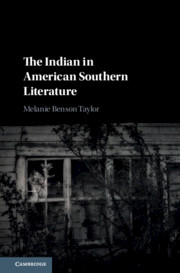Chapter 1 - Doom and Deliverance
William Faulkner’s Dialectical Indians
Published online by Cambridge University Press: 30 June 2020
Summary
Most readers agree that Faulkner’s Indian characters are romanticized, if not grotesquely stereotypical; the author himself readily admitted that he “made them up.” Indeed, neither Faulkner nor his critics seem able to conceive of his Indian as anything more than a static, romantic, obsolete trope, despite the fact that Natives appeared frequently and suggestively at the margins of his world, and that they reappeared in his fiction as self-buttressing concepts sited uncannily between reality and fantasy - an imaginary supplement or alter ego that presents a compensatory and destabilizing fiction for the white southern subject. This chapter argues that we need to acknowledge how very intimate and “real” this Indian is in order to fully appreciate the significance of their symbolic transubstantiations. There are Indians hidden in plain sight throughout Faulkner’s career in ways we have hardly begun to notice, and their “disappearance” is the product of an unspoken collusion between Faulkner’s stated method and our symptomatic critical misprision. His Indians are finally there and not-there at the same time, mirroring an uncanny vacancy in the white southern ego that both desires and rejects their supplemental knowledge.
- Type
- Chapter
- Information
- The Indian in American Southern Literature , pp. 56 - 111Publisher: Cambridge University PressPrint publication year: 2020

